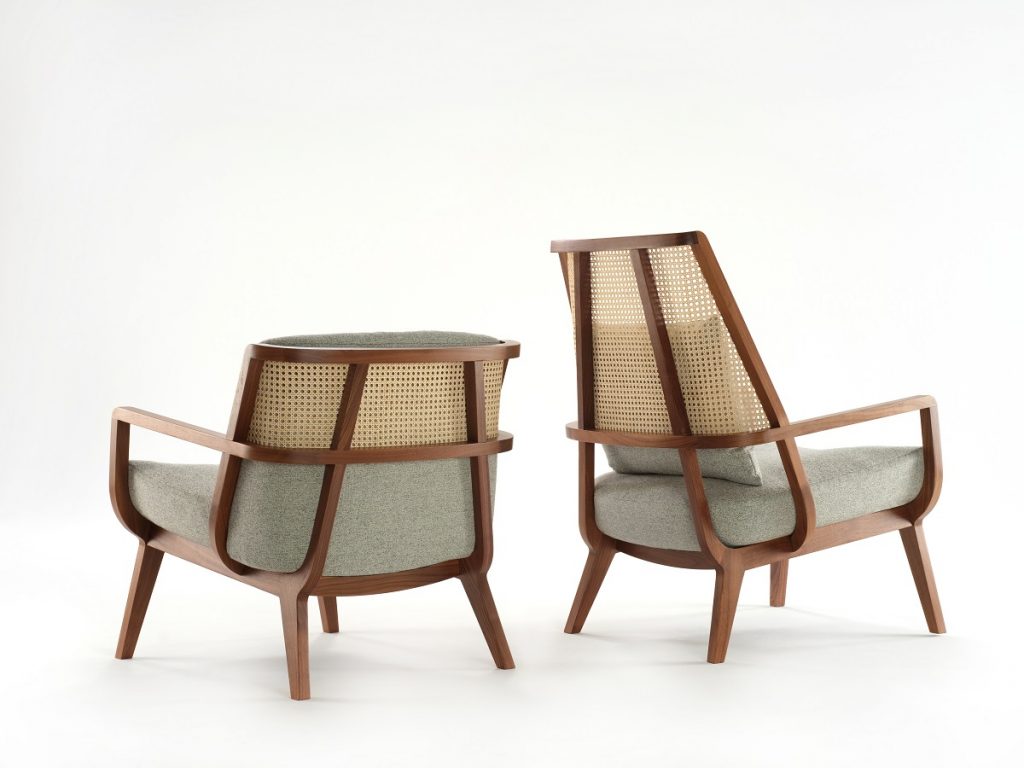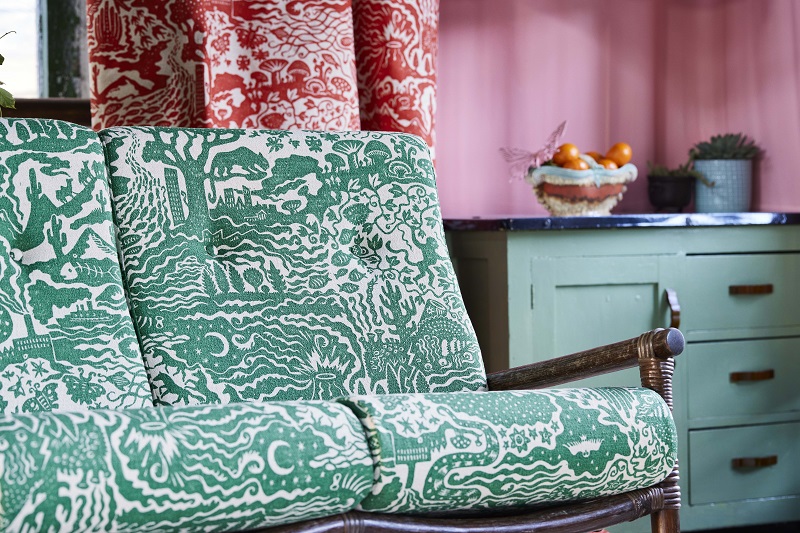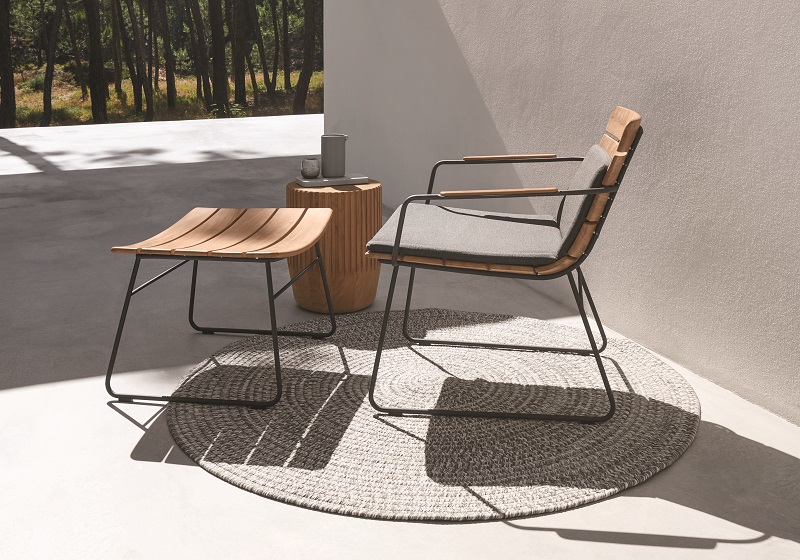
Designer Mark Gabbertas developed the William dining chair around the idea that outdoor furniture can have the same elegance and lightness of touch as its interior counterparts.
William explores the potential of three dimensionally shaping solid teak to achieve a compelling profile and ergonomically correct one. The slates are attached to the minimal powder coated sled base via an almost invisible fixing system that helps preserve the chair’s visual integrity.
In 2016 the piece, which was manufactured for Gloster, was awarded a Design Guild Mark. Fast forward three years and Mark submitted sister design the William lounge chair and ottoman, which also was selected by the Furniture category judges to be awarded the mark of excellence.
We caught up with Mark to talk through the design process of the William lounge chair and ottoman.
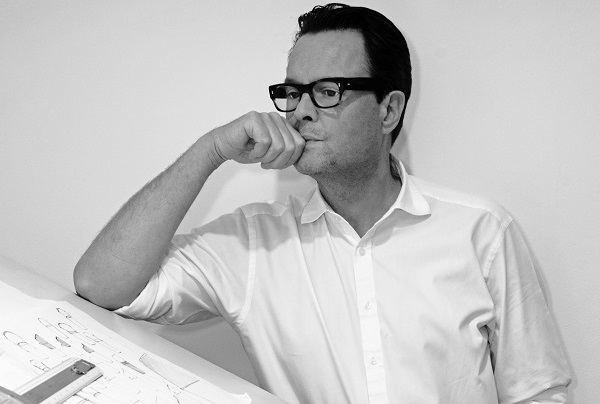
What initially inspired you to design William?
The William lounge chair and ottoman are natural extensions to this range following the success of the dining chair. We wished to explore the potential to design an outdoor chair that had the visual and physical lightness of its interior cousins. It seemed there was an opportunity to create a more refined and elegant typology of a chair for exterior use, even when considering the specific requirement of designing this type of furniture.
Explain its concept.
We wanted to explore the potential of three dimensionally shaping solid teak to achieve an interesting profile and an ergonomically correct one. Each teak slat is machined from a single solid piece and each slat is different. The slats are carried by a minimal powder coated stainless steel sled base that effortlessly incorporates an arm.
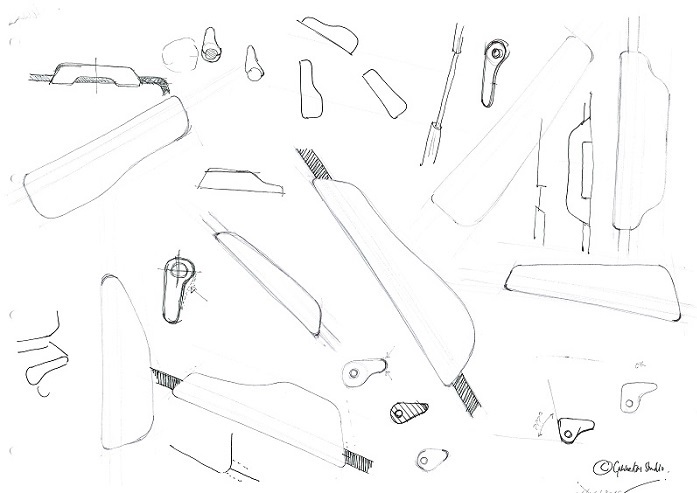
Who does this design appeal to?
Interestingly, this design manages to span both domestic and contract markets. I would like to think this is because it has an aesthetic which doesn’t seem to belong to either. The engineering of the chair also manages to be robust enough for contract use.
The design is essentially both contemporary but at the same time, it incorporates an element of mid-century styling through the use of the curved slats. We have found in retrospect that the chair has been combined with mid-century pieces and in modernist landscapes.
What challenges did you have to overcome?
The challenge was how to attach the solid teak slats to the frame, a familiar problem with this type of chair. What invariably happens is the slats are screwed to the steel frame with the effect being too visible and distracting. Instead, William utilises a hidden and almost invisible fixing system which was developed especially for this chair, which took months of experimentation and prototyping to resolve.
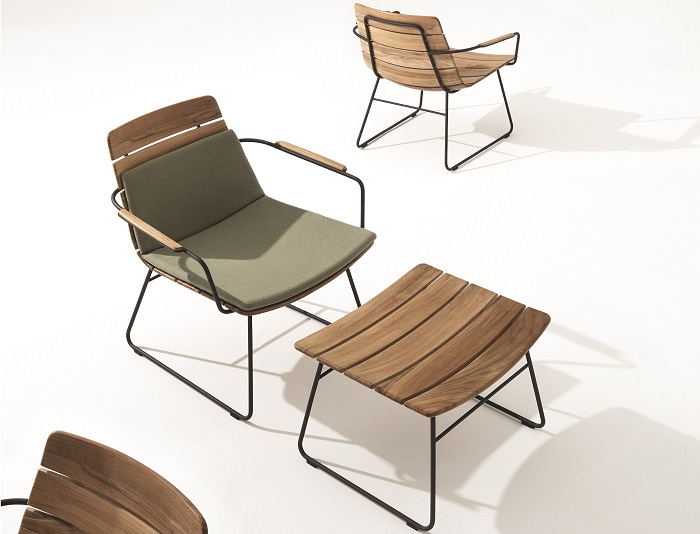
What modifications did you make along the way?
We managed to design the ergonomics correctly within one or two degrees and within a few mm from the outset. The surprising challenge apart from the fixing system was to resolve the arm and armrest design completely. We experimented with several different ideas before settling on the combination of an ‘extension’ to the steel frame and a teak pad. The chair was only ever designed with arms as the clear majority of demand is for this.
For more information about Mark, go to gabbertas.com.



